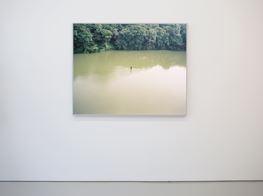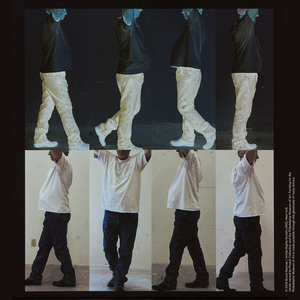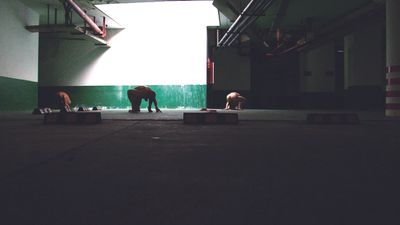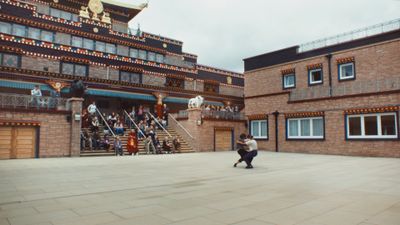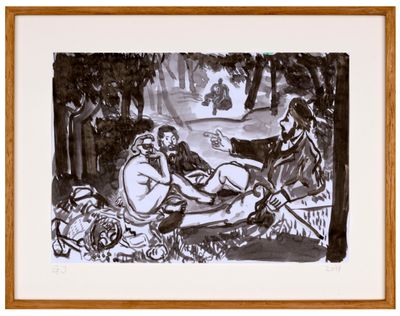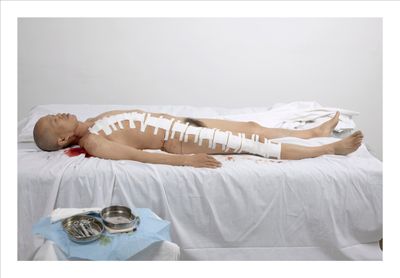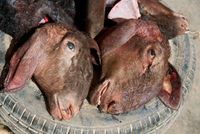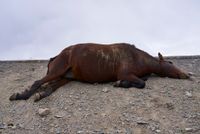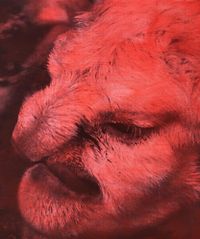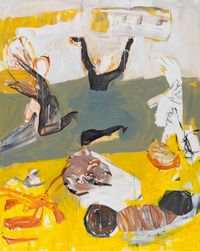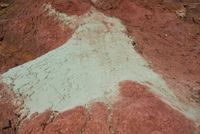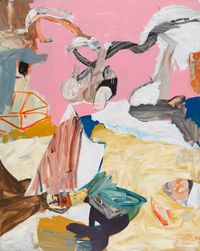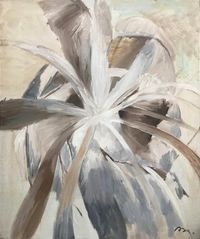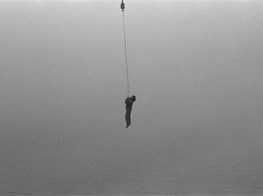Thirteen Artists Interpret Force Majeure in New York
In New York, Eli Klein Gallery opened the new decade with a retrospective of sorts: Force Majeure (18 January–18 March 2020), curated by Lu Mingjun, brings together works by 13 artists from China that were produced between 2000 and 2020. The aim is to consider the definitions of force majeure, a term that translates to 'superior strength' in French and describes unforeseeable and inexorable circumstances that release parties in a contract from fulfilling their obligations, be it a natural or man-made event.

Tang Dixin, Shooting the Moon (2016). Archival inkjet print. 120 x 150 cm. Exhibition view: Force Majeure, Eli Klein Gallery, New York (18 January–18 March 2020). Courtesy the artist and Eli Klein Gallery.
Recurrent throughout the exhibition is the interaction between the human body and nature. Zhuang Hui's 'Qilian Range' videos (2014–2016), for instance, show the artist with his back to the camera, pretending to paint the scenery before him with a paint brush or a spray can. In Li Ming's short film Luoge Luoge Luoge (2010), naked bodies crawl in deserted buildings and rooftops before moving into the woods with a ringing soundtrack in the background. Force majeure, by definition, includes natural disasters, but nature in Zhuang Hui's and Li Ming's works does not impose itself upon the human body; rather, it is the human body that intervenes and ultimately divulges its vulnerability as nature remains constant.
The performing body also appears in works that contemplate identity, gender, or religion—constituents of a self whose nuances disrupt definitions that are often imposed. In her 71-minute film Strongholds (2016), Shen Xin weaves contemporary meditations on Buddhist philosophy with dialogues on intimacy, trust, and self-discovery as two Dutch women prepare a dance routine at a Buddhist monastery in Scotland. Future Host, a New-York based ensemble founded by choreographer Ma Tingying and writer Kang Kang in 2016, revisits the experiences of contemporary China in 'Studies' (2016–ongoing), whose video recordings involve performers hosting Taoist Qigong sessions—a system of movements that gained currency in the 1980s and 90s China—in a study of collective mediation.
Despite 'different perspectives and means,' writes curator Lu Mingjun, the painters included in the exhibition 'all see body perception as the beginning of painting as well as a weapon to challenge the juggernaut'. Wang Sishun's acrylic on canvas Apocalypse 17.3.12 (2020), related to another body of work under the same title, consists of eerily anthropomorphic stones he collected during his travels around the world—a distillation of his physical adventures. The painting portrays a close-up of the head of a furry creature with a human-like face, its grimace and reddish tint courting a sense of apprehension. For Xiao Kegang, the act of painting is founded on intuition and uncertainty. In his acrylic paintings Anonymous -1 and -2 (2019), ambiguously figurative forms emerge or slide back into abstraction.
While painting provides a means for introspection for Shi Jiayun and Gong Jian, the two artists diverge in their responses to the concept of superior power. Shi Jiayun ventures beyond the boundaries of self, adopting painting to capture visions outside of her experiences, such as the blurry ellipses that float around a body of blue in Oval #1 (2018) or the lingering strips in Dark Red #1 (2018). In 'The Second Self' series (2019), Gong Jian projects his subjectivity onto art history by inserting a masturbating man—a nod to Peter Hujar's black-and-white photograph Seated Nude, Bruce de Sainte Croix (1976)—into reproductions of canonical works such as Manet's Le déjeuner sur l'herbe (1862–1863) or a Morandi still life.
Some of the other body-oriented works hark back to the 1980s and 90s, when performance art in China began to develop towards extreme physical punishment, testing the endurance of both artist and audience. Yang Zhichao's Planting Grass (2000), preserved as a video and archival prints, involved implanting shoots of grass into the artist's back. He Yunchang similarly subjects his body to voluntary torture in One Meter of Democracy (2010), a video recording of a doctor cutting a metre-long wound on his body without anaesthesia.
The performing body also appears in works that contemplate identity, gender, or religion—constituents of a self...
He Yunchang asked the audience to vote on whether he should go through with his performance or not before it began, repeating the process until the majority were in favour, in a pseudo-democratic gesture. Here, the body becomes a political site, whose fate is defined by the group rather than a sovereign power; a device with the ability to create force majeure beyond the confines of the state, which controls people through laws and medical regulations.
The state's interest in and systematic acquisition of its citizen's personal data form the crux of Dai Furen's Federal Census (Nativity and Mother Tongue) and Federal Census (Health) (both 2019). In the clear vinyl sheets affixed to the wall are the questions inquired by the U.S. Federal Census, dating from 1790 to 2010 by decades, that reveal shifts in language from 'place of birth' to 'foreign country' in which a person was born and ethnicity. The procedure seems innocuous, but perhaps it is not; census, after all, is about relinquishing information about one's body to the government. The body being the ultimate force—that is, a strength—that could render a contract void. —[O]

